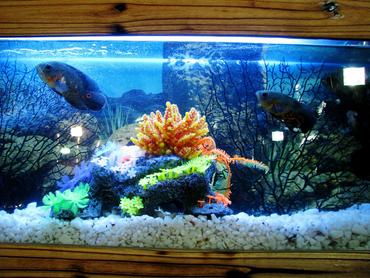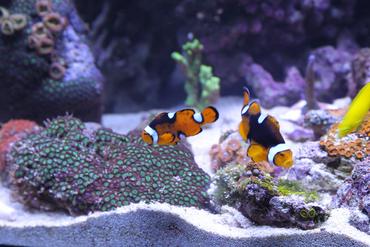HOW TO INTERPRET FISH FOOD LABELS

Updated
If you want to select a high-quality commercial food for your aquarium fish you should understand how to interpret a fish food label.
Offering your freshwater aquarium fish a healthy diet is one of the most important things you can do to make sure they stay healthy. Selecting a healthy diet for your fish can be difficult, however, because there are so many options to choose from. Though you should plan to offer your fish a supplemental diet of various live foods, frozen food and freeze-dried foods, it will be easiest to offer them a staple diet consisting of a commercial flake or pellet food. When it comes to selecting a commercial food for your fish you may be at a loss where to begin just because there are so many different brands and formulas available. In order to make the right choice for your fish you should learn the basics of how to interpret a fish food label. If you know how to read the label on various fish food containers you will be able to differentiate between the different formulas to determine which food is best for your fish.
Elements of Fish Food Labels
The label on a package of fish food should contain all the information you need to know about that specific product. In addition to the name of the product and the name of the manufacturer, you should also find the net weight of the product and perhaps a description of the product as well. One of the most important parts of the label to pay attention to, however, is the guaranteed analysis. A guaranteed analysis is simply a breakdown of the contents of the food by percentage of crude protein, fat, fiber and moisture. If other substances like minerals and vitamins have been added, those ingredients should be listed on the guaranteed analysis as well. The second most important part of the food label is the ingredients list – this is where you will find a list of all the ingredients used to create the specific food product. Ingredients on the ingredients list appear in order by weight – the more of an ingredient that was used to create the product, the higher on the list it will appear.
Quality Ingredients
When shopping for commercial fish foods you should pay attention to the ingredients included in the ingredient list – the foods that were used to make the product will give you a clue as to the quality of the product. Keep in mind that some foods are designed specifically for carnivorous species of fish and others for herbivores. When evaluating a food designed for carnivorous fish, you should look for protein-based food sources on the ingredients list. Some quality ingredients to look for include whole fish and fish meal. Food for herbivorous species of fish should contain a high percentage of vegetable-based food sources like Spirulina algae. You may also want to look for vitamins and minerals that have been added to the product. Vitamins like biotin, a B-complex vitamin, and various minerals are sometimes added to fish foods to help boost the metabolism of aquarium fish.
Other Things to Look For
In analyzing the ingredients on a fish food label you should be aware of a tactic that many manufacturers use called “splitting” ingredients. The ingredients on a food label are listed in order by weight, so if fishmeal makes up most of the weight of the product, it will be listed first on the ingredient list. In order to save money, many manufacturers use fillers like wheat products to bulk up their foods without significantly increasing the price but they do not want consumers to realize that the bulk of the product is actually a filler ingredient. To get around this, manufacturers often “split” ingredients – separating ingredients like wheat into multiple ingredients like wheat germ and wheat flour so they can be listed separately, after quality ingredients like fishmeal. The splitting of ingredients in this way makes it look like fishmeal is the main ingredient in a product even though that may not be the case. When evaluating a commercial fish food, look for ingredients that are repeated twice on the ingredient list – this could be an indication that the ingredient has been “split”.
If you are serious about providing your fish with a healthy, balanced diet you need to know how to select a high-quality fish food. Many manufacturers add fillers to their products and unless you understand how to interpret a fish food label you could end up feeding your fish a staple diet that does not meet their nutritional needs.
comments powered by Disqus
MOST RECENT ARTICLES

During the summer months, it may become more of a challenge to keep your aquarium temperature stable.

There are many different species of barbs but some of them are better than others for the larger home aquarium.




